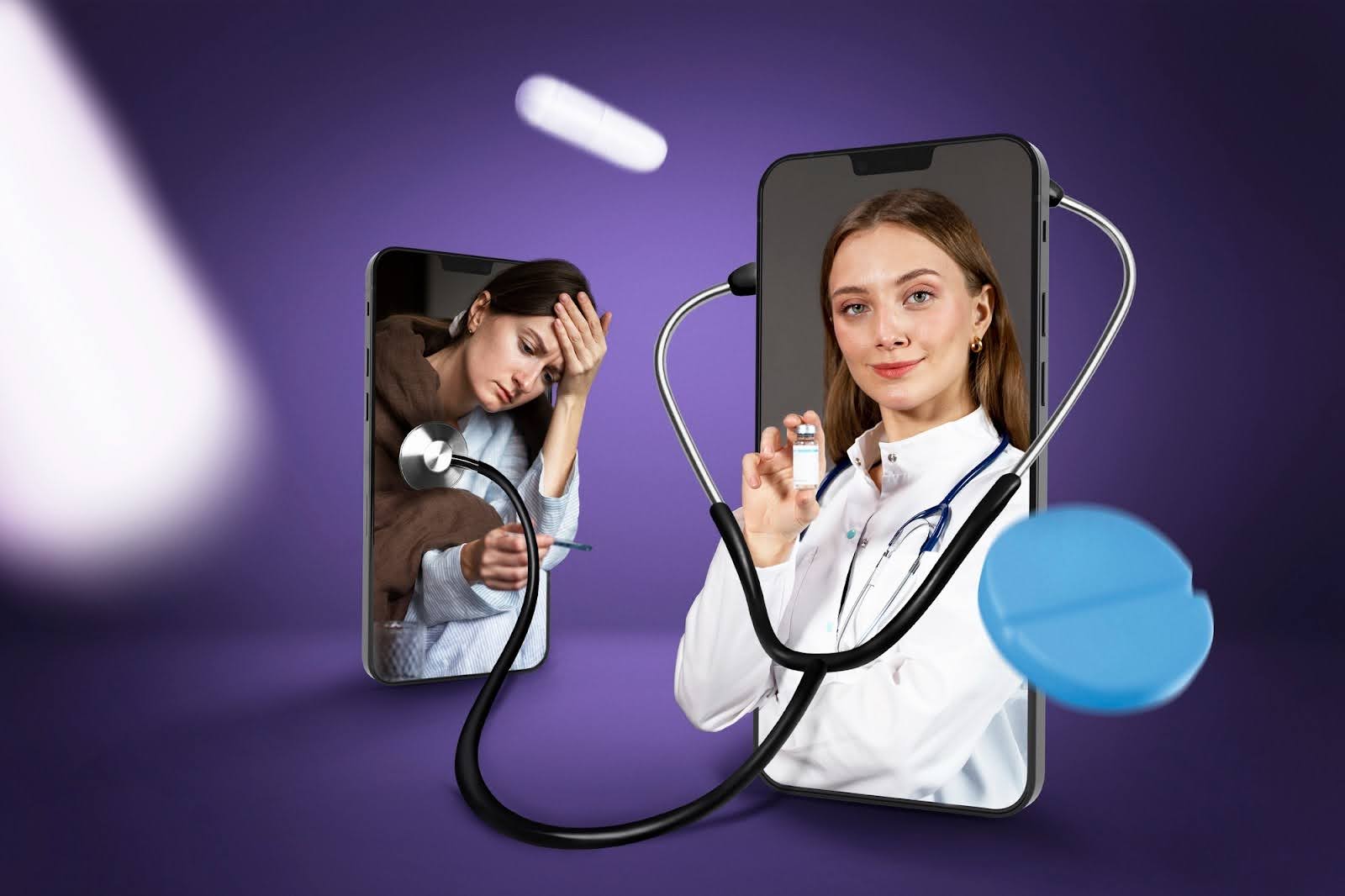In today’s fast-paced world, convenience reigns supreme. When someone experiences a health concern, the last thing they want to do is navigate complex websites or wade through phone menus.
Click-to-call ads offer a simple and effective solution for medical centers to connect with potential patients who are ready to talk.
This blog dives deep into the power of click-to-call ads for medical centers. We’ll explore the benefits of these ads, how they work, and best practices for creating effective click-to-call campaigns that drive appointments and grow your practice.
Why Click-to-Call Ads Are Perfect for Medical Centers
There are several compelling reasons why click-to-call ads are a perfect match for medical centers:
- Increased Urgency and Conversions: When someone searches for a medical condition or specialist online, they’re often experiencing a level of urgency. Click-to-call ads provide a direct way for them to connect with your center immediately, increasing the chances of converting them into a patient.
- Reduced Friction: Traditional online advertising often involves filling out forms or navigating websites. Click-to-call ads eliminate this friction, allowing potential patients to connect with your staff with a single click, which is especially helpful for those who might be feeling unwell.
- Improved Accessibility: Click-to-call ads are accessible to everyone, regardless of technical expertise. This is particularly important for older adults or those who may not be comfortable navigating complex websites.
- Measurable Results: Click-to-call ads offer clear and measurable results. You can track the number of clicks and calls generated by your campaigns, allowing you to refine your strategy for maximum impact.
How Click-to-call Ads Work for Medical Centers
Click-to-call ads are a specific type of online advertisement designed to connect potential patients directly with your medical center by phone. Here’s a breakdown of how they work:
- Targeting: You can target your click-to-call ads to a specific audience based on demographics, location, search queries, and online behavior. This ensures that your ads are reaching people who are most likely to be interested in your services.
- The Click: When someone clicks on your click-to-call ad, their phone automatically initiates a call to your medical center. This eliminates the need for them to manually search for your phone number or navigate a website.
- The Call: The call connects directly with your reception staff or a designated phone line at your medical center. This allows for a real-time conversation where staff can answer questions, schedule appointments, and address any immediate concerns.

Best Practices for Click-to-Call Ads for Medical Centers
Now that you understand the benefits and how click-to-call ads function, let’s explore some best practices for creating effective campaigns for your medical center:
Craft Clear and Compelling Ad Copy
- Focus on Benefits: Highlight the benefits of contacting your medical center, such as “Get expert advice now” or “Schedule an appointment in minutes.”
- Target Specific Conditions: Consider creating different ad groups for different medical specialties or conditions. This allows for more targeted messaging that resonates with your audience. For instance, an ad for a pediatrician might say “Pediatric care made easy – Call now for well-child visits or urgent concerns.”
- Include a Strong Call to Action: End your ad copy with a clear call to action, such as “Call Now” or “Talk to a Specialist Today.”
Leverage Extensions for Added Information
- Location Extension: Include your medical center’s location extension in your click-to-call ads. This allows potential patients to see your address and get directions with a single click.
- Call-Only Extensions: Consider using call-only extensions, which hide your website address and focus solely on phone calls. This can be particularly effective for urgent care situations like an ad reading “Feeling unwell? Call Now for Same-Day Appointments.”
Track and Analyze Results
- Monitor Call Performance: Regularly track the number of calls generated by your click-to-call campaigns. Analyze the time of day and days of the week when calls are most frequent. This helps you optimize your ad schedule for better results. For example, you might discover a surge in calls on weekdays during lunchtime, prompting you to adjust your ad schedule accordingly.
- Track Call Conversions: If possible, track the number of calls that convert into booked appointments. This allows you to measure the effectiveness of your click-to-call campaigns in terms of generating new patients.
- Use Call Tracking Numbers: Consider using a unique call tracking number for your click-to-call ads. This allows you to differentiate these calls from other sources and gain valuable insights into campaign performance.
Benefits Beyond Appointments: Extending the Power of Click-to-Call Ads
Click-to-call ads are powerful tools for driving appointments, but their benefits extend far beyond scheduling. Let’s explore some additional ways medical centers can leverage click-to-call ads:
Provide Immediate Support and Reassurance
- Urgent Care Inquiries: For conditions requiring immediate attention, click-to-call ads allow potential patients to connect with your staff for guidance and reassurance. An ad like “Sudden pain? Don’t wait – Call Now for Urgent Care” can be a lifeline for those experiencing unexpected health concerns.
- Post-Procedure Support: Offer click-to-call support for patients following procedures or surgeries. This allows them to reach your team with questions or concerns without delay. Consider an ad that reads “Feeling uneasy after surgery? Call Now to speak to a nurse.”
Enhance Patient Education and Awareness
- Promote Informational Sessions: Use click-to-call ads to promote educational seminars or workshops offered by your medical center. An ad like “Free Diabetes Management Workshop – Call to Register Today” can be a great way to engage the community and attract new patients.
- Answer Common Questions: Develop click-to-call campaigns that address frequently asked questions about specific conditions or treatments. This empowers potential patients with information and encourages them to connect with your center for further discussion. For instance, an ad for a cardiology center might say “Heart Health Concerns? Call Now to Ask a Cardiologist.”
Streamline Appointment Reminders
- Appointment Confirmations: Utilize click-to-call to send automated appointment reminders. This not only reduces the risk of missed appointments but also allows patients to easily confirm their attendance. An ad reading “Appointment Reminder: Call Now to Confirm Your Visit” can be a helpful nudge for busy patients.
- Reschedule or Cancel Appointments: Click-to-call ads can be used to offer a convenient way for patients to reschedule or cancel appointments. This improves efficiency for both patients and your medical center staff. An ad like “Need to Change Your Appointment? Call Now to Reschedule” can alleviate frustration and streamline scheduling processes.
Beyond the Basics: Advanced Click-to-Call Strategies for Medical Centers
While the core principles remain the same, there are advanced strategies you can employ to further optimize your click-to-call campaigns:
Utilize Click-to-Text Functionality
- Offer Text Support: Consider incorporating click-to-text functionality alongside click-to-call. This caters to patients who may prefer to communicate via text message for appointment scheduling or basic inquiries. An ad offering “Text ‘SCHEDULE’ to Book Your Appointment” can be particularly appealing to younger generations.
Leverage Automated Call Routing
- Route Calls Efficiently: Implement automated call routing systems that direct calls to the appropriate department or specialist based on the nature of the inquiry. This ensures calls are handled efficiently and reduces wait times for patients.
Personalize the Call Experience
- Greet Callers by Name: If possible, utilize technology that allows you to greet callers by name when they connect through a click-to-call ad. This creates a more personalized touch and fosters a positive patient experience.
Train Staff for Effective Call Handling
- Invest in Staff Training: Train your staff on effectively handling calls generated from click-to-call campaigns. This ensures they can answer questions, address concerns, and convert calls into appointments efficiently. Training should cover active listening skills, clear communication techniques, and appointment scheduling procedures.
Compliance Considerations for Click-to-Call Ads in Healthcare
It’s important to remember that healthcare marketing is subject to specific regulations. Here are some key considerations for ensuring your click-to-call ads comply with healthcare advertising guidelines:
- Accuracy and Truthfulness: All claims made in your click-to-call ad copy must be accurate and truthful. Avoid misleading or exaggerated statements about services or treatments offered.
- Privacy and Security: Ensure your click-to-call campaigns adhere to patient privacy regulations like HIPAA. This includes obtaining proper consent for communication and safeguarding patient data collected through calls.
- Professionalism and Objectivity: Maintain a professional and objective tone in your ad copy. Avoid making unsubstantiated claims or disparaging competitors.

Building a Winning Click-to-Call Campaign: A Step-by-Step Guide
Now that you understand the benefits and strategies for click-to-call ads, let’s explore a step-by-step guide to building a winning campaign for your medical center:
1. Define Your Goals: Start by clearly defining your goals for the campaign. Are you aiming to increase appointment bookings, promote a specific service, or generate leads for educational events?
2. Identify Your Target Audience:
- Demographics (age, gender, income level, etc.)
- Location (geographic area you serve)
- Search queries (keywords and phrases people use to find medical services)
- Online behavior (websites they visit, interests they express)
3. Choose the Right Platform: Several advertising platforms offer click-to-call functionality. Popular options include Google Ads, Microsoft Ads, and social media platforms like Facebook and Instagram. Consider your target audience and budget when selecting a platform.
4. Craft Compelling Ad Copy: Write clear and concise ad copy that highlights the benefits of contacting your medical center. Remember to include a strong call to action that encourages users to click-to-call.
5. Utilize Ad Extensions: Take advantage of ad extensions to provide additional information like your location, call-only features, and links to specific landing pages on your website.
6. Set Campaign Budget and Bidding Strategy: Determine your budget for the click-to-call campaign and choose an appropriate bidding strategy. You can opt for manual bidding, where you set a maximum cost per click or automated bidding strategies that optimize your ad spend based on your goals.
7. Track and Analyze Results: Monitor the performance of your click-to-call campaign closely. Track metrics such as clicks, calls, call duration, and conversions (appointments booked). Use this data to refine your campaign and optimize results over time.
A Partner for Success: Webco Marketing and Your Click-to-Call Journey
At Webco Marketing, we understand the unique challenges and opportunities faced by medical centers in the digital age. Our team of experienced marketing professionals can help you develop and implement effective click-to-call campaigns that drive results. We offer a range of services to support your click-to-call journey, including:
- Campaign Strategy Development: We work with you to define your goals, identify your target audience, and develop a winning click-to-call strategy.
- Ad Copywriting and Design: Our team creates compelling ad copy that resonates with your target audience and encourages them to connect with your medical center.
- Campaign Management: We handle the day-to-day management of your click-to-call campaign, including platform setup, bidding optimization, and performance monitoring.
- Reporting and Analytics: We provide comprehensive reports that track the performance of your campaign and offer insights for ongoing improvement.
Conclusion: Click-to-Call Ads - A Powerful Tool for Medical Center Success
Click-to-call ads offer a valuable tool for medical centers to connect with potential patients seeking immediate care, information, or appointment scheduling. In today’s fast-paced world, convenience is key, and click-to-call ads provide a direct and efficient way for patients to connect with your medical center.
By following the best practices and advanced strategies outlined in this blog, you can create effective click-to-call campaigns that deliver measurable results. Remember to prioritize compliance with healthcare advertising regulations and invest in ongoing campaign optimization based on data and performance insights.
With the right approach, click-to-call ads can be a powerful tool for medical centers to:
- Increase patient acquisition and retention
- Improve patient communication and satisfaction
- Enhance operational efficiency
- Promote educational initiatives and community outreach
By leveraging the power of click-to-call ads, medical centers can ensure they are readily available to patients when they need them most, ultimately contributing to a healthier community.

